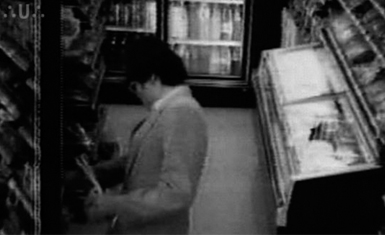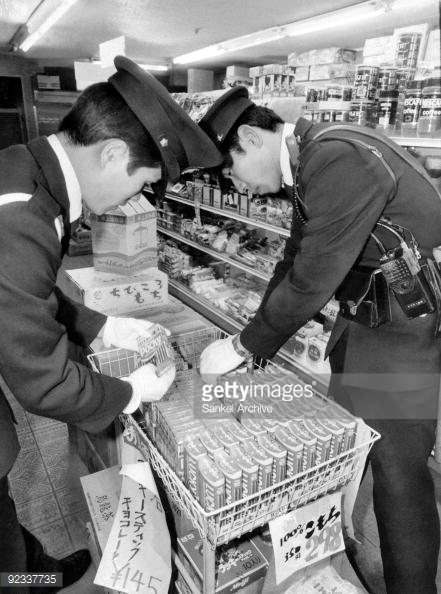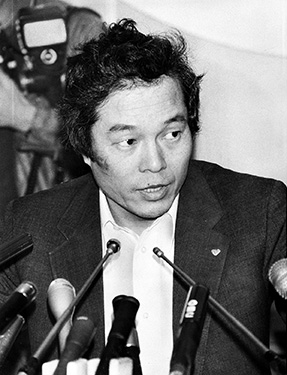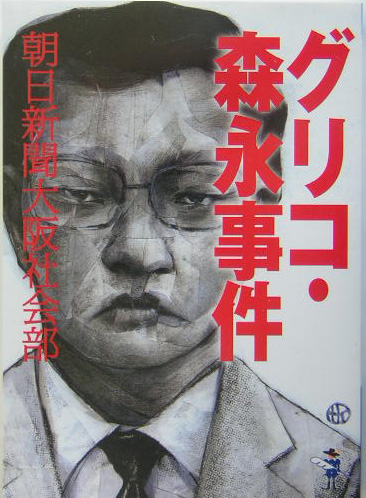
|
|||
The Glico Morinaga Case aka the Monster With 21 Faces - Unexplained Mysteries
Source : http://en.wikipedia.org/wiki/The_Monster_with_21_Faces
The Monster with 21 Faces was a name (originally of the villain in Edogawa Rampo's detective novels) used as an alias by the person or group responsible for the blackmail letters in the Glico Morinaga case in Japan. Variations of the name's translation, including "The Mystery Man with the 21 Faces" and "The Phantom with 21 Faces", have also been used in articles and books featuring the case. On the evening of March 18, 1984, Katsuhisa Ezaki, the president of Ezaki Glico, a large Japanese candy company, was kidnapped from his home by two masked gunmen. The following morning, Glico’s director received a phone demand: 1 billion yen and 220 pounds of gold bullion, in exchange for Ezaki’s safe return. Luckily for Glico, it would never get to that. On the third day of his captivity, Ezaki escaped. But this was the start, rather than the grand finale, to an increasingly bizarre string of events. On April 10, three cars in Glico’s parking lot were set on fire. The arson was followed by a delivery of hydrochloric acid and a series of notes with the cryptic signature, The Monster with 21 Faces. A massive product recall, multiple threats to a new victim, Morinaga & Company, 21 packages of poisoned candy, and one suicide later, the Monster announced his retirement. His identity remains unknown. The kidnapping At 9:00pm on 18 March 1984, two masked men wearing caps and armed with a pistol and rifle broke into the home of Katsuhisa Ezaki, the president of Glico. Prior to entering Ezaki's house, the two men had first forced their way into the neighboring home of Ezaki's mother, bound her and took the key to the president's house. Using the key to enter the main house, they then tied up Ezaki's wife and daughter. Believing the two men were ordinary robbers, Ezaki's wife attempted to negotiate with them for their freedom in exchange for money, but was rejected. The two men then cut the telephone lines and stormed the bathroom, where Ezaki and his other two children were hiding. Ezaki panicked and cried for help, but was threatened that he would be killed unless he calmed down. The two men abducted Ezaki and held him captive in a warehouse.  The next morning, they called the director of the company in Takatsuki city and issued a ransom demand for 1 billion yen and 100 kilograms in gold bullion. However, three days later, on 21 March, Ezaki managed to escape from the warehouse in Ibaraki city, Osaka prefecture. A couple of weeks later, several cars in the company parking lot were set on fire. Then, the "Monster" began to send letters. "Dear Glico, How have you been? I'm fine, but this weather is crazy right? Guess that's why it's called global warming. Hahaha. We set your car on fire." In the first letter (sent in a plastic container along with hydrochloric acid because why the hell not?) the Monster claimed they had poisoned Glico's candies, which resulted in Glico losing $21 million dollars worth of product that had to be pulled from shelves. The number may be a coincidence, but then again, who knows? The Monster taunted the police by detailing in a letter its method of entry, what typewriter it used to write the message and where it found the container with the acid in it. It didn't matter; cops scoured the country for them and came up empty. Soon enough, just to prove they were toying with everyone, the Monster suddenly sent a letter stating its forgiveness of Glico, and moved on. The home invasion and kidnapping itself was a crime that was unknown in post-war Japan[citation needed] and was considered shocking to many.
Meanwhile, the Monster with 21 Faces sent letters to the media, taunting police efforts to capture the culprit(s) behind the scare. An excerpt from one such letter, written in hiragana and with an Osaka dialect, reads, "Dear dumb police officers. Don't tell a lie. All crimes begin with a lie as we say in Japan. Don't you know that?" The written challenge was also sent to Koshien police station. "Why don't you keep it to yourself? You seem to be at a loss. So why not let us help you? We'll give you a clue. We entered the factory by the front gate. The typewriter we used is Panwriter. The plastic container used was a piece of street garbage. Monster with 21 faces". Eventually, the Monster stopped contacting Glico and, on June 26, issued a letter saying "We Forgive Glico!". However, the Monster then turned its extortion campaign on Morinaga and the food companies Marudai Ham and House Foods Corporation. The Fox-Eyed Man Police did get close to the suspected mastermind of the "Monster with 21 Faces", however. On 28 June, two days after agreeing to stop harassing Marudai in exchange for 50 million yen, the "Monster" arranged for a Marudai employee to toss the ransom money onto a local train heading toward Kyoto when a white flag was displayed. An investigator disguised as a Marudai employee and following the drop instructions of the "Monster" spotted a suspicious man observing him when he was riding a train to the drop point. The man was described as a large, well-built man wearing sunglasses, his hair cut short and permed, with "eyes like those of a fox." When the white flag was not displayed, the undercover policeman and the "Fox-Eyed Man" ( kitsune-me no otoko) both disembarked from the train at Kyoto station, and while the investigator waited on a bench, the "Fox-Eyed Man" continued to observe him. The investigator later headed back to Osaka, and the "Fox-Eyed Man" boarded another car in the same train. When the investigator then disembarked at Takatsuki station, the "Fox-Eyed Man" boarded a Kyoto-bound train and another undercover investigator tailed him from Kyoto, but the "Fox-Eyed Man" eventually lost him. Shiga Prefecture incident Police got a second chance at the "Fox-Eyed Man" on 14 November, when the "Monster" group attempted to rob the House Food Corporation of 100 million yen in another secret deal. At a rest stop on the Meishin Expressway, near Otsu, investigators saw the Fox-Eyed Man, wearing a golf cap and dark glasses, but again he evaded capture. The cash delivery van they were tailing continued to head toward the drop point, where they were to drop the money in a can under a white piece of cloth. When the delivery van reached the drop point, the white cloth was there but the can was missing. As a result, the investigative team was ordered to withdraw, believing that the drop was an evaluation by the "Monster" of police response.  However, an hour earlier, a patrol car from the local Shiga prefecture police had spotted a station wagon with its engine running and its headlights off. The station wagon was also sitting less than 50 meters from a white cloth suspended from a fence. Unaware of the secret ransom drop, the police officer drove up to the station wagon and shone his flashlight on the driver, revealing a thin-cheeked man in his forties, wearing a golf cap over his eyes and, more telling, a wireless receiver with headphones. Surprised by the policeman, the driver sped off, with the police car following in pursuit until the station wagon lost him. The station wagon was later found abandoned near the Kusatsu Station and had been discovered to have been stolen earlier in Nagaokakyo in Kyoto prefecture. Inside the abandoned car was a radio transceiver that had been eavesdropping in on radio communications between the police officers of six prefectures, including Osaka, Kyoto, and Kobe, the prefectures of the drop point. Also recovered was a vacuum cleaner, although no evidence could be traced back to the "Monster" group. Following the blackmail campaign on House Foods, the "Monster" then turned its sights on Fujiya in December 1984. In January 1985, police released the facial composite of the "Fox-Eyed Man" to the public. In August 1985, after continuing harassment by the "Monster with 21 Faces" and the failure to capture the "Fox-Eyed Man", Shiga Prefecture Police Superintendent Yamamoto killed himself by self-immolation.  The final message and aftermath Five days after the death of Yamamoto, on August 12, the "Monster with 21 Faces" sent its last message to the media: Yamamoto of Shiga Prefecture Police died. How stupid of him! We've got no friends or secret hiding place in Shiga. It's Yoshino or Shikata who should have died. What have they been doing for as long as one year and five months? Don't let bad guys like us get away with it. There are many more fools who want to copy us. No-career Yamamoto died like a man. So we decided to give our condolence. We decided to forget about torturing food-making companies. If anyone blackmails any of the food-making companies, it's not us but someone copying us. We are bad guys. That means we've got more to do other than bullying companies. It's fun to lead a bad man's life. Monster with 21 Faces. Following this message, the Monster with 21 Faces was not heard of again. In June 1995, the statute of limitations ran out on the assault and kidnapping of Ezaki, followed by the elapse of the statute of limitations in February 2000 on the charge of attempted murder for the poisoned food products. In 2002, the character of the Laughing Man in Ghost in the Shell: Stand Alone Complex was inspired by the Glico-Morinaga case. Prime suspects Following the release of the identikit in January 1985, the Tokyo Metropolitan Police quickly identified the culprit as Manabu Miyazaki. Labelled as Mr. "M" or Material Witness "M", Miyazaki was suspected of issuing a 1976 tape declaring support of a local union in a labor dispute with Glico that bore similarities to the numerous declarations of the "Monster with 21 Faces". There had been numerous whistleblowing incidents between 1975 and 1976 that were also attributed to Miyazaki, which highlighted Glico's dumping of starches and other industrial waste into the local river and drainage system. Miyazaki was also suspected to have been involved with the resignation of a union leader over accounting irregularities when Glico Ham and Glico Nutritional Foods merged. In addition, his father was the boss of a local Yakuza group and Miyazaki himself bore a striking resemblance to the "Fox-Eyed Man". Speculation had gone on for months that Miyazaki was the "Fox-Eyed Man", until the Tokyo Metropolitan Police checked his alibis and cleared him of any wrongdoing. The resulting notoriety caused Miyazaki to become a social commentator, and he wrote a book about his experiences called Toppamono. The Tokyo Metropolitan Police also suspect that various Yakuza groups had a hand in the Glico-Morinaga case. The end of the blackmail campaign occurred around the time of the Yama-ichi war, the mob war between the Yamaguchi-gumi and the Ichiwa-kai. In addition, Japanese National Public Safety Commission investigated extreme left-wing and right-wing groups as possible suspects. In 2000, there were rumors in the Japanese media of North Korean involvement in the Glico-Morinaga case. comments powered by Disqus Submit News/Videos/Links | Discuss article | Article Link | More Unsolved and Unexplained Mysteries |
More can be addded on request. Direct your requests at vinit@theunexplainedmysteries.com
